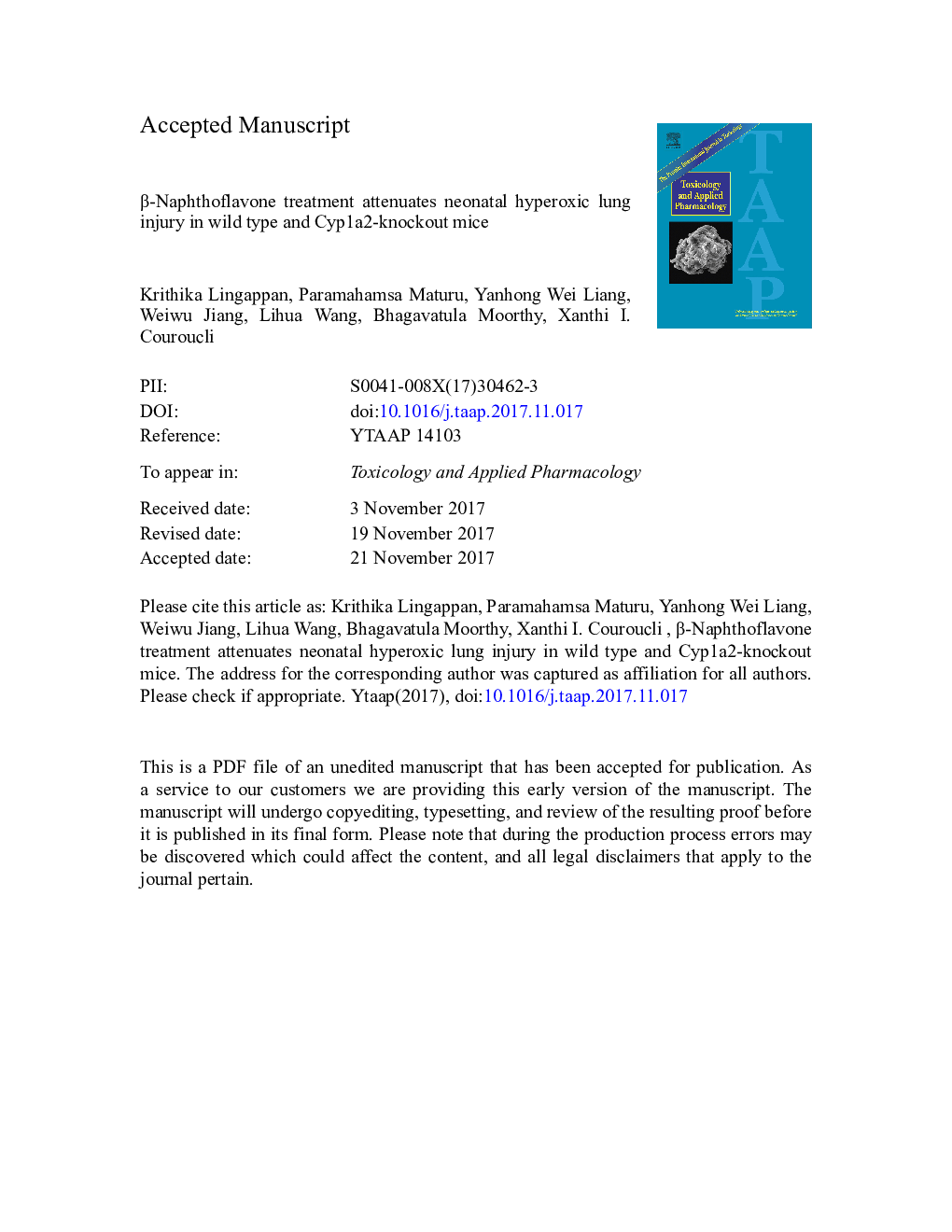| Article ID | Journal | Published Year | Pages | File Type |
|---|---|---|---|---|
| 8538935 | Toxicology and Applied Pharmacology | 2018 | 34 Pages |
Abstract
Exposure to supraphysiological concentrations of oxygen (hyperoxia) leads to bronchopulmonary dysplasia (BPD), one of the most common pulmonary morbidities in preterm neonates, which is more prevalent in males than females. Beta-naphthoflavone (BNF) is protective against hyperoxic lung injury in adult and neonatal wild type (WT) mice and in and mice lacking Cyp1a1gene. In this investigation, we tested the hypothesis that BNF treatment will attenuate neonatal hyperoxic lung injury in WT and Cyp1a2Â â/â mice, and elucidated the effect of sex-specific differences. Newborn WT or Cyp1a2Â â/â mice were treated with BNF (10Â mg/kg) or the vehicle corn oil (CO) i.p., from postnatal day (PND) 2 to 8 once every other day, while being maintained in room air or hyperoxia (85% O2) for 14Â days. Hyperoxia exposure lead to alveolar simplification and arrest in angiogenesis in WT as well as Cyp1a2Â â/â mice No significant differences were seen between WT and Cyp1a2Â â/â mice. Cyp1a2Â â/â female mice had better preservation of pulmonary angiogenesis at PND15 compared to similarly exposed males. BNF treatment attenuated lung injury and inflammation in both genotypes, and this was accompanied by a significant induction of hepatic and pulmonary CYP1A1 in WT but not in Cyp1a2Â â/â mice. BNF treatment increased NADPH quinone oxidoreductase (NQO1) mRNA levels in Cyp1a2Â â/â mouse livers compared to WT mice. These results suggest that BNF is protective in neonatal mice exposed to hyperoxia independent of CYP1A2 and this may entail the protective effect of phase II enzymes like NQO1.
Related Topics
Life Sciences
Environmental Science
Health, Toxicology and Mutagenesis
Authors
Krithika Lingappan, Paramahamsa Maturu, Yanhong Wei Liang, Weiwu Jiang, Lihua Wang, Bhagavatula Moorthy, Xanthi I. Couroucli,
